Key takeaways
- Audience targeting is crucial for effective Facebook Ads; personalized targeting leads to higher engagement and conversions.
- Testing multiple ad variations improves performance, while a strong call-to-action can dramatically increase click-through rates.
- Regularly analyze ad performance metrics and be willing to adjust campaigns based on real feedback for better results.
- Patience and consistency in monitoring ads are essential; embracing failures can lead to valuable insights for future campaigns.
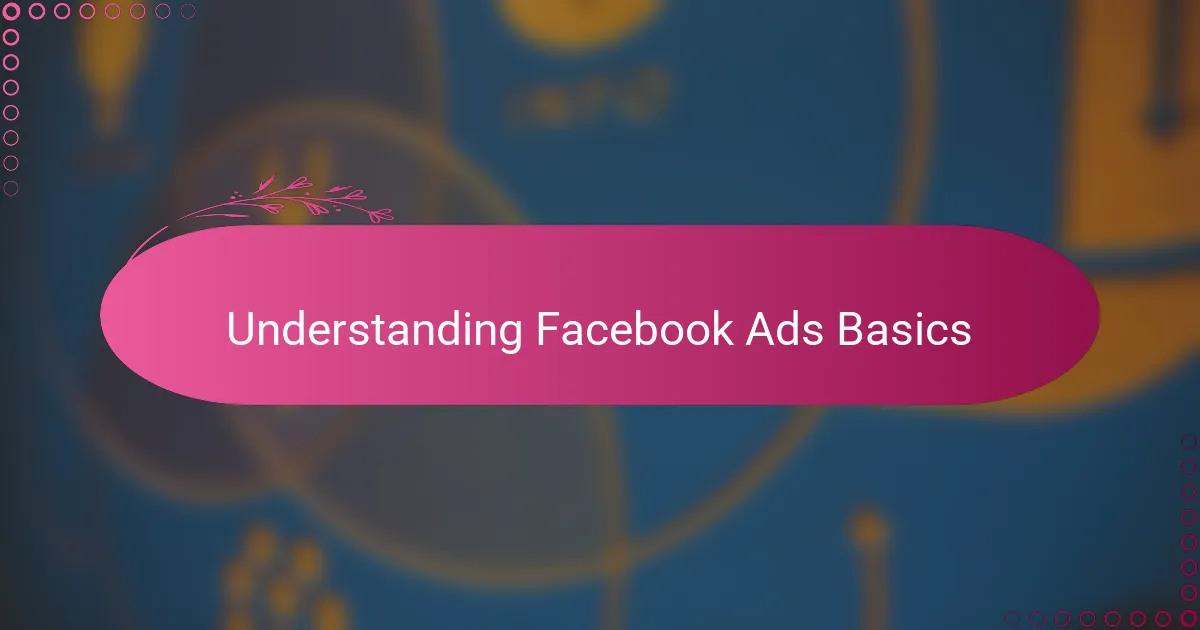
Understanding Facebook Ads Basics
When I first dipped my toes into Facebook Ads, I realized quickly that understanding the platform’s core elements—like campaign objectives, ad sets, and targeting—was absolutely crucial. Have you ever felt overwhelmed by all the settings and options? I certainly did, until I broke it down step-by-step, which made the whole process feel more manageable and even exciting.
One thing I learned early on is how powerful audience targeting can be. Facebook’s detailed targeting options let me reach specific groups based on interests, behaviors, and demographics, making my ads far more effective than simply casting a wide net. It’s like speaking directly to the people who actually care about what you’re offering.
Also, getting familiar with Facebook’s ad formats was a game changer for me. Knowing when to use a carousel ad versus a video or a simple image helped me showcase my products in the most engaging way possible. It made me realize that Facebook Ads isn’t just about spending money—it’s about crafting the right message for the right audience with the right creative.
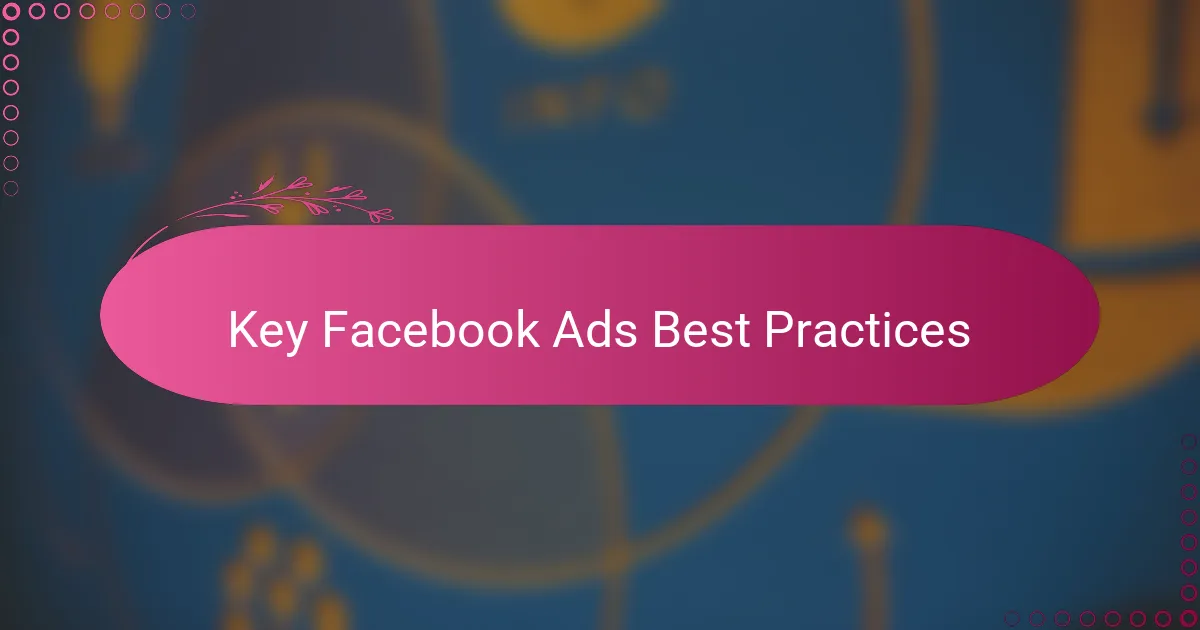
Key Facebook Ads Best Practices
One key best practice I swear by is testing relentlessly. I used to create one ad and hope it performed well, but that rarely worked. Once I started running multiple versions—tweaking images, headlines, and calls-to-action—I saw a clear difference in engagement and conversions. Have you tried comparing small variations to find what truly resonates?
Budget allocation also changed for me when I understood pacing. Instead of dumping my entire budget at once, I spread it evenly over time and watched the results carefully. This approach gave me room to pause or shift strategies if something wasn’t working, saving money and frustration.
Lastly, don’t underestimate the power of a strong call-to-action (CTA). Early on, I thought a simple “Learn More” button was enough, but tailoring the CTA to match the ad goal—like “Shop Now” for products or “Sign Up” for newsletters—dramatically improved my click-through rates. It’s amazing how such a small detail can make a big impact.
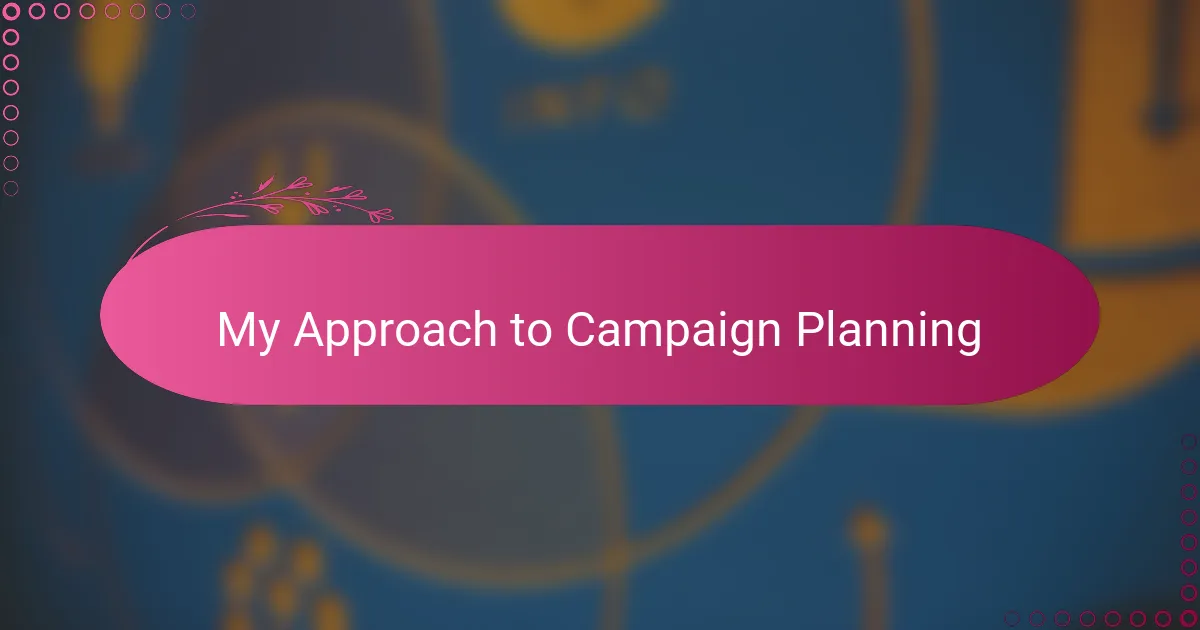
My Approach to Campaign Planning
When I sit down to plan a Facebook Ads campaign, I always start with defining a clear objective. Without knowing exactly what I want to achieve—whether it’s brand awareness, lead generation, or sales—it’s like shooting in the dark. Have you ever launched a campaign without a solid goal and wondered why it didn’t deliver? That was a costly lesson I learned early on.
Next, I map out my target audience carefully. It amazes me how much time I used to rush this step, assuming Facebook’s automatic targeting would do the trick. But personalizing the audience based on insights from previous campaigns or customer data made all the difference. It feels like having a conversation rather than shouting to a crowd.
Finally, I create a simple timeline that breaks down each phase of the campaign—from testing to scaling and optimization. This planning rhythm keeps me focused and prevents me from chasing every shiny new tactic. Over time, I realized that discipline in planning often beats last-minute hustle. Isn’t that something we all could use more of?
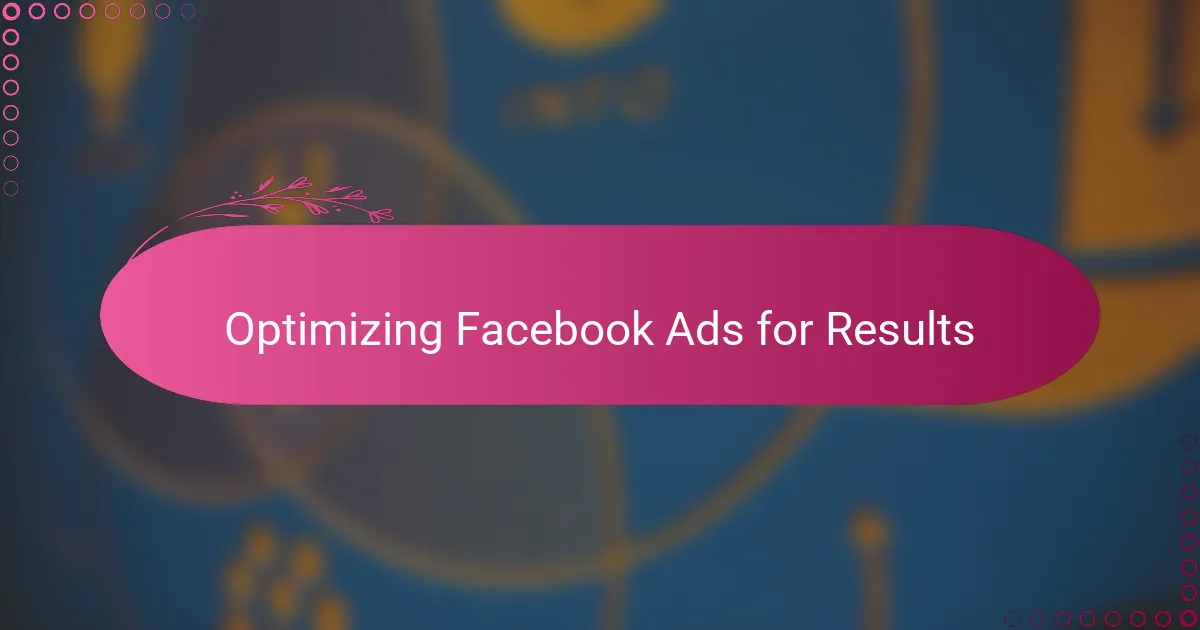
Optimizing Facebook Ads for Results
Optimizing Facebook Ads for results felt like decoding a secret language for me. I quickly learned that tweaking bids and budgets wasn’t enough—monitoring ad relevance and engagement metrics gave me real clues about what was working. Have you ever ignored those metrics, only to wonder why your ads fizzled out? Trust me, paying close attention to these numbers can change everything.
Another eye-opener was the power of refresh. I used to run the same ads for weeks, hoping they’d keep delivering, but the results dropped sharply. Once I committed to rotating creatives and testing new angles regularly, my campaigns regained momentum. It’s like giving your audience something fresh to connect with, rather than repeating the same message ad nauseam.
Lastly, I can’t overstate how important the Facebook pixel became in my optimization toolkit. Installing it let me track actions beyond clicks, like purchases or sign-ups, and optimize accordingly. Are you still relying solely on surface-level data? Incorporating pixel insights transformed how I refined campaigns—making every dollar matter more.
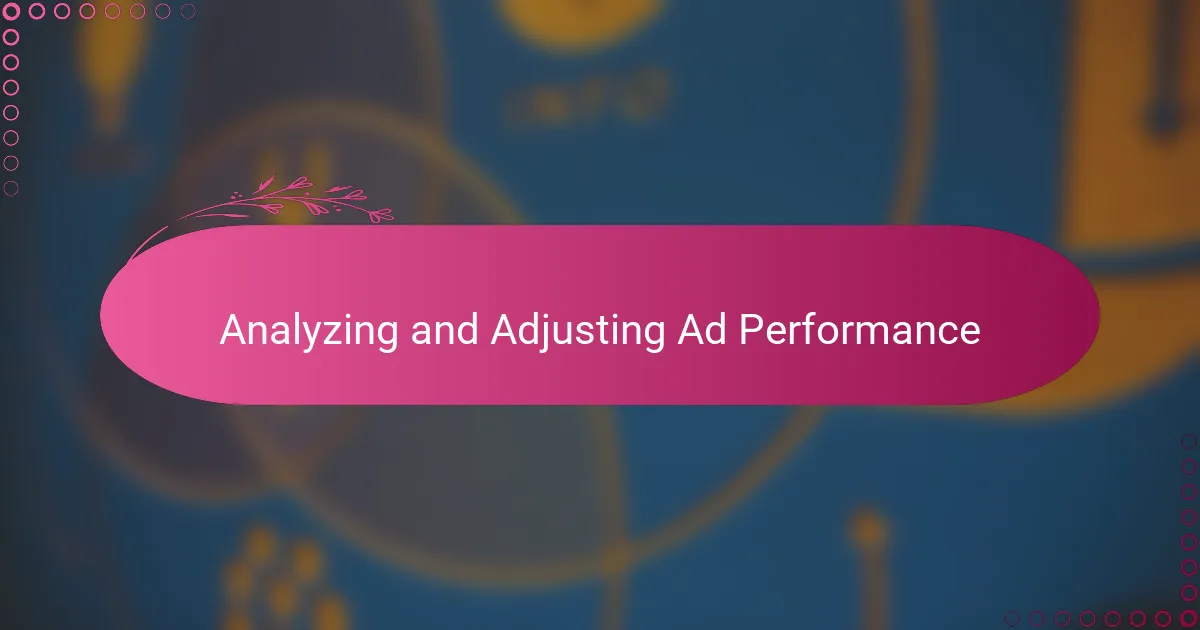
Analyzing and Adjusting Ad Performance
Diving into analyzing ad performance, I found that numbers tell the real story behind the scenes. At first, I was confused by metrics like CTR (click-through rate) and ROAS (return on ad spend), but once I started focusing on these, I could see which ads truly connected. Have you ever stared at a dashboard wondering what to prioritize? Trust me, zeroing in on a few key indicators makes the picture much clearer.
Adjusting campaigns isn’t just about chasing big wins; it’s about steady tweaks based on real feedback. I recall one campaign where shifting the audience slightly and lowering the bid after a couple of days boosted engagement noticeably. It felt like fine-tuning a guitar—the difference was subtle but critical. Does it sound tedious? It can be, but the payoff is worth it.
Sometimes, I’ve paused campaigns just to reset and rethink when performance dipped. It’s tempting to keep pushing ads that aren’t converting, but stepping back gave me fresh perspective and a chance to test new ideas. Have you faced that moment where doing less actually led to better results? It’s a humbling but valuable lesson.
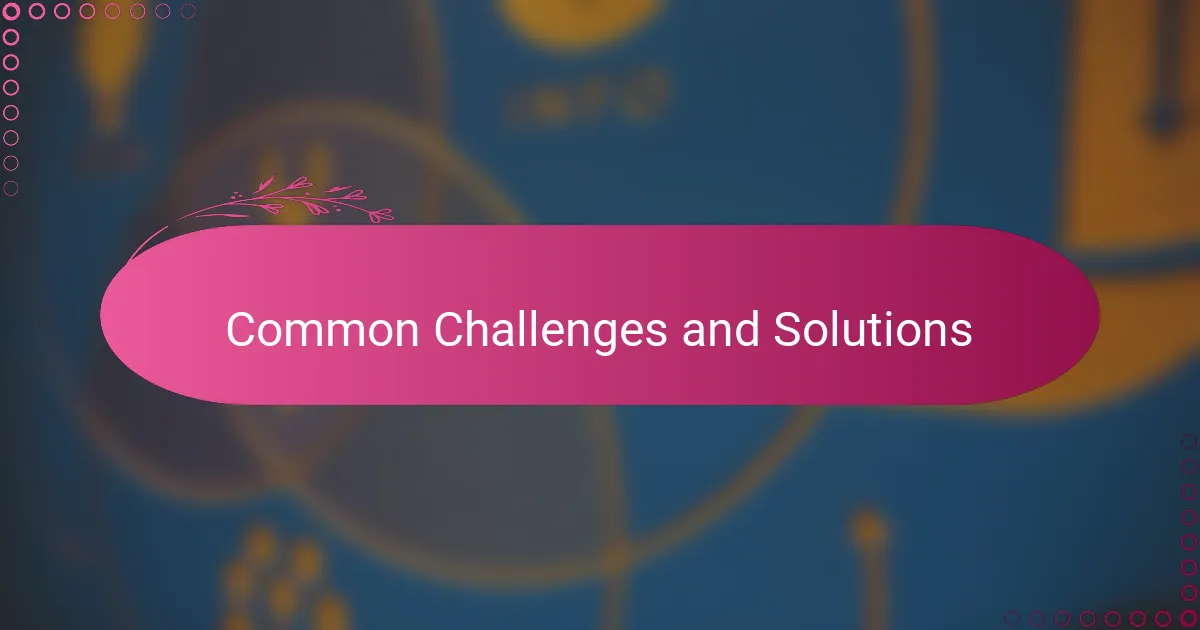
Common Challenges and Solutions
One challenge I often ran into was ad fatigue—when the same audience sees your ads over and over, and engagement just tanked. I remember feeling frustrated, trying to figure out why my once-popular ads suddenly fell flat. The solution? Rotating creatives and refreshing the message regularly. It’s like giving your audience a new story to listen to, which kept the connection alive and clicks coming.
Budget management was another hurdle. Early on, I would throw a lump sum at campaigns without a clear plan, then watch results trickle in too slowly or disappear altogether. What helped me was pacing the spend, breaking the budget into smaller chunks, and monitoring performance closely. This way, I avoided burning through funds too fast and had room to pivot when needed.
Lastly, targeting the right audience felt tricky at first. I wondered if guessing demographics or interests would ever work. What changed everything was layering my targeting based on real data from previous campaigns and customer feedback. This made me realize—precision beats guessing every time, and the ads start to feel more like conversations than shots in the dark.
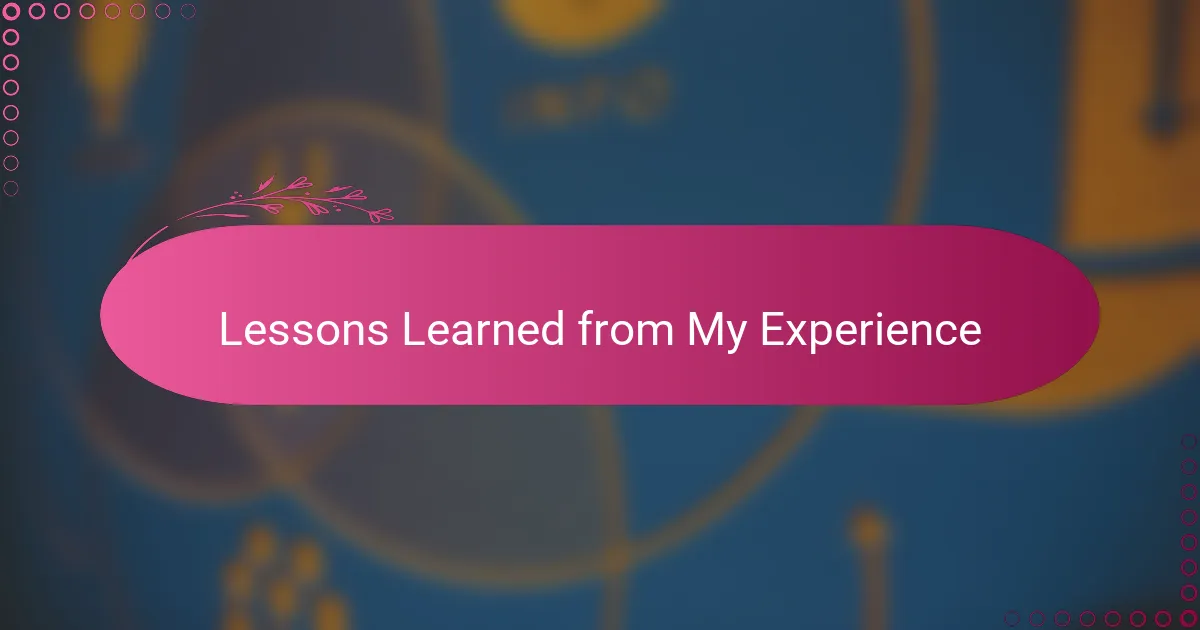
Lessons Learned from My Experience
One lesson that really stuck with me is the importance of patience. Early on, I’d get impatient waiting for results and often tweaked campaigns too quickly, which only muddled the data. Have you ever jumped the gun and then felt confused by inconsistent outcomes? Learning to give ads enough time to gather meaningful data changed the whole game for me.
I also discovered that embracing failure as part of the process is crucial. Not every ad will hit the mark, and that used to frustrate me. But over time, I realized that each flop taught me something valuable—like which messaging missed the audience or which visuals fell flat. Don’t you think those “failures” are just stepping stones anyone serious about advertising must walk?
Finally, consistency in monitoring became a personal must. There were moments when I let campaigns run without daily checks, thinking, “They’re on autopilot now.” Spoiler: they’re not. Catching small dips or sudden changes early helped me avoid bigger losses and tweak faster. Have you experienced that “aha” moment when a quick adjustment saved a campaign? I know I have, and it’s incredibly rewarding.